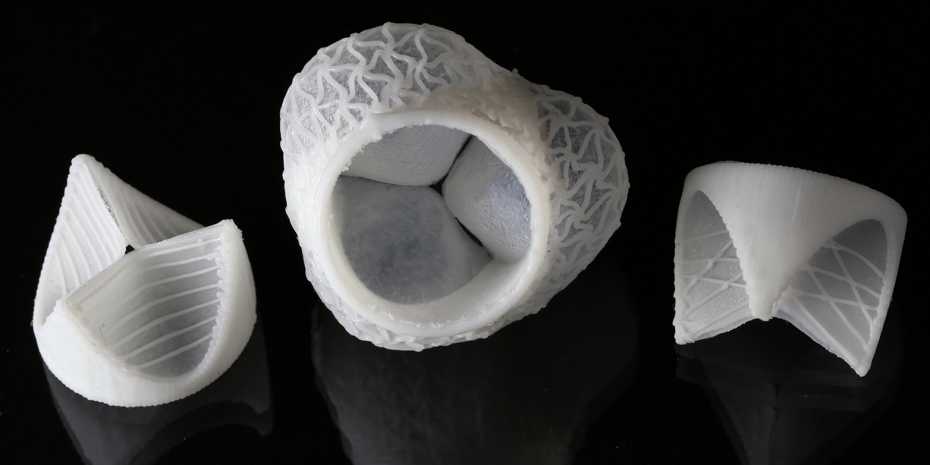Researchers from ETH Zürich, Switzerland, and South African medical device manufacturer Strait Access Technologies (SAT) are developing 3D printed artificial heart valves from silicone.
As reported in an article in the latest issue of the scientific journal Matter, it is recognized that current heart valve solutions are expensive, labor intensive to manufacture, and temporary. It is also estimated that around 850,000 people will require artificial heart valves in 2050.
“It would be marvelous if we could one day produce heart valves that last an entire lifetime and possibly even grow along with the patient, so that they could also be implanted in young people as well,” explained Dr. Manuel Schaffner, one of the study’s lead authors and PhD student in the Complex Materials group.
3D printed heart valves
As stated by the researchers, the heart’s four chambers are each equipped with a valve to ensure blood flow in one direction. If these heart valves begin to leak, shrink, swell, or rupture, the blood places the heart under severe strain. This can cause arrhythmia or heart failure.
With 3D printing, a heart valve can be custom-made from a CT scan of a patient’s aorta. This data is used in tandem with computer simulation to calculate the forces acting on the artificial valve implant and its potential deformation. The valve is created as silicone resin is sprayed unto a crown-shaped valve form, followed by collagen fibers which are then deposited via direct ink writing (DIW) to facilitate both thickness and strength to the valve.
The material used is bio-compatible, and the researchers have found blood flow through the artificial heart valve to be equal to conventional replacement valves. For comparison, valves typically used by heart surgeons consist of hard polymers or animal tissue (from cows or pigs) combined with metal frames. According to the study, the human body is prone to reject these implants causing patients to take life-long immunosuppressants or anticoagulants, that lead to unwelcome side effects.

A long-lasting heart remedy
The novel 3D printed silicone heart valves are produced in an hour and a half, a significant reduction compared to traditional valves which take several working days. The scientists’ goal is to extend the life of these replacement valves to 10-15 years – the duration needed to remedy a related heart aliment. Nevertheless, it will take the team a minimum of 10 years before the new artificial heart valves can come into clinical use. Also, an industrial partner or possibly a spin-off is needed for commercialization.
Fergal Coulter, lead author of the study has developed the 3D printers needed to produce the heart valves and is currently furthering research into the silicone heart valve. “As a research group, we are unfortunately unable to provide a seamless offering from the first experiment to the first application in the human body,” added Dr. Schaffner.
In 2017, ETH Zürich researchers created the first entirely soft artificial heart using silicone 3D printing. Silicone 3D printed hearing aid models were also made using such technologies.
“Bioinspired Heart Valve Prosthesis Made by Silicone Additive Manufacturing” is co-authored by Fergal B. Coulter, Manuel Schaffner, Jakob A. Faber, Peter Zilla, Deon Bezuidenhout, and André R. Studart.
For more additive manufacturing research news, subscribe to the Industry newsletter, follow us on Twitter and like us on Facebook.
Sign up to Jobs to post and find new opportunities near you.
Featured image shows the multi-material 3D printed patient-specific shaped heart valves. Photo via Fergal Coulter/ETH Zürich.

Leave A Comment